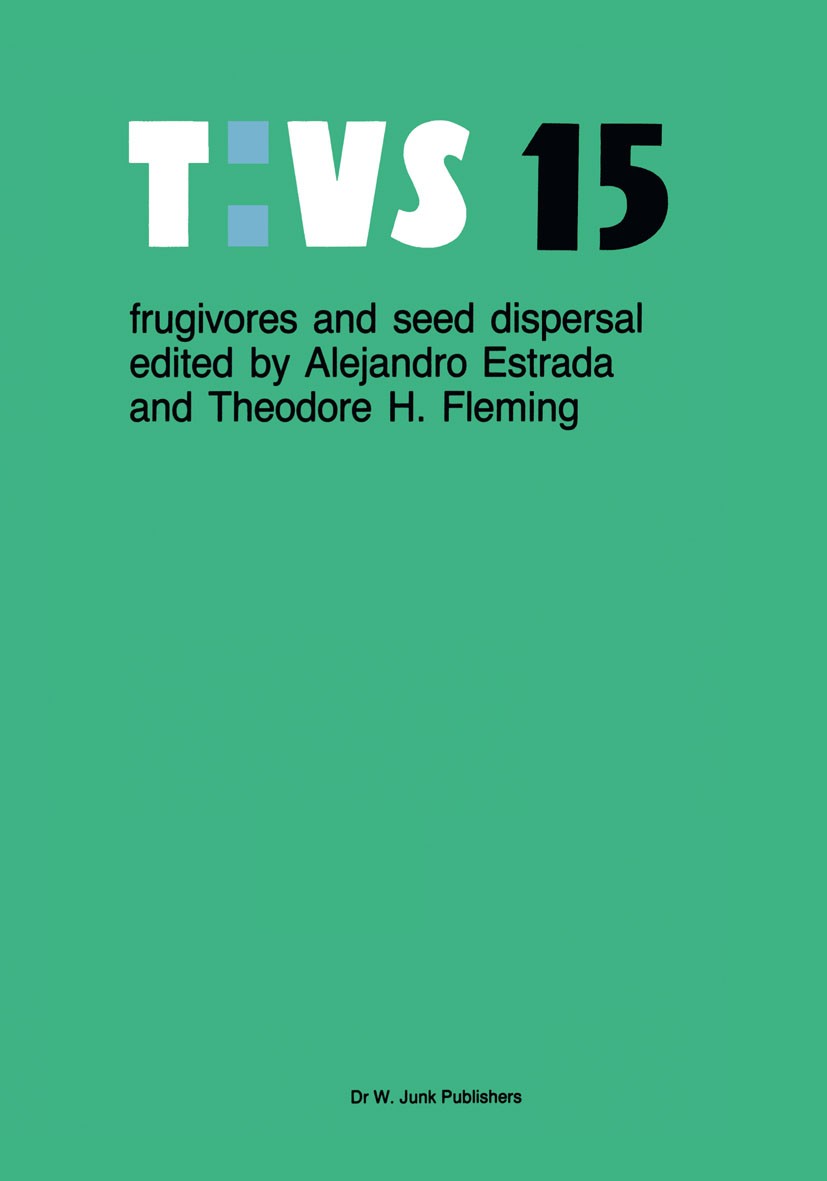| 书目名称 | Frugivores and seed dispersal |
| 编辑 | Alejandro Estrada,Theodore H. Fleming |
| 视频video | http://file.papertrans.cn/350/349372/349372.mp4 |
| 丛书名称 | Tasks for Vegetation Science |
| 图书封面 |  |
| 描述 | A wide variety of plants, ranging in size from forest floor herbs to giant canopy trees, rely on animals to disperse their seeds. Typical values of the proportion of tropical vascular plants that produce fleshy fruits and have animal-dispersed seeds range from 50-90%, depending on habitat. In this section, the authors discuss this mutualism from the plant‘s perspective. Herrera begins by challenging the notion that plant traits traditionally interpreted as being the product of fruit-frugivore coevolution really are the outcome of a response-counter-response kind of evolutionary process. He uses examples of congeneric plants living in very different biotic and abiotic environments and whose fossilizable characteristics have not changed over long periods of time to argue that there exists little or no basis for assuming that gradualistic change and environmental tracking characterizes the interactions between plants and their vertebrate seed dispersers. A common theme that runs through the papers by Herrera, Denslow et at. , and Stiles and White is the importance of the ‘fruiting environment‘ (i. e. the spatial relationships of conspecific and non-conspecific fruiting plants) on rate |
| 出版日期 | Book 19861st edition |
| 关键词 | Vegetation; desert; evolution; forest; plant; plants; seed; tree |
| 版次 | 1 |
| doi | https://doi.org/10.1007/978-94-009-4812-9 |
| isbn_softcover | 978-94-010-8633-2 |
| isbn_ebook | 978-94-009-4812-9Series ISSN 0167-9406 Series E-ISSN 1875-130X |
| issn_series | 0167-9406 |
| copyright | Dr W. Junk Publishers, Dordrecht 1986 |
 |Archiver|手机版|小黑屋|
派博传思国际
( 京公网安备110108008328)
GMT+8, 2025-11-13 21:15
|Archiver|手机版|小黑屋|
派博传思国际
( 京公网安备110108008328)
GMT+8, 2025-11-13 21:15


